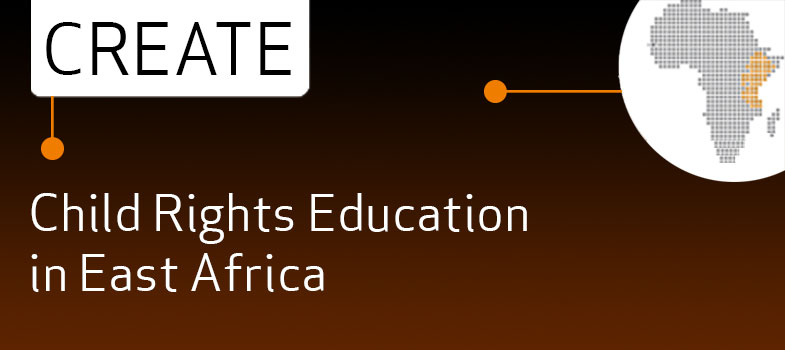1.3 Who is a child?
Having explored some memories from your own childhood, this section moves on to explore what we mean by childhood, and how we define ‘a child’.
Although the law clearly states that a child is anyone who is under 18 years of age, this is not the way many people would define a child. The way a child is defined depends, to a very large extent, on the social, economic and cultural factors in a society. Factors such as tradition, community ideas, behaviour, physical development, place of residence, or the conditions a child is living in, can all determine whether or not a person is considered a child.
Until what age are boys and girls defined as children in your culture?
In most societies in East Africa, children are defined by their physical development, ability, responsibilities in the household and social status, rather than by the number of years they have lived. In the biological sense, a child is any person regardless of age and station in life. In a social sense, a woman or an unmarried/uninitiated man may remain a child for ever. A man may only be considered an adult when he marries and produces children. A woman is no longer seen as a child when she has given birth yet she may be considered a ‘perpetual minor’ and not be recognised as an independent individual without reference to her father, husband or male relatives.
The passage to adulthood is frequently marked by ritual or initiation around the time of puberty; however, these practices vary widely. In some cultures, male adolescents are required to be circumcised before they are regarded as adults; however, the age of circumcision can range from under 16 to over 26 years old. Even after this, full adulthood is not attained until marriage and the establishment of a family. In cultures where male child circumcision and female genital mutilation are practiced as initiation into adulthood, once boys or girls are circumcised, they are no longer regarded as children but rather as adults ready to marry and have children, regardless of their age. Examples of such cultures in East Africa are the Bagisu and Kukusabin of Uganda and the Karengin and Babukusu of Kenya. Among the Bagisu and Babukusu, for example, it is offensive to refer to a circumcised male as a boy (Musinde), even when he is as young as 14 years, because this means uncircumcised. The circumcised male builds himself a grass thatched hut (Simba) and no longer lives in the same house as his parents.
Some initiation practices, however, do have other serious consequences. Female genital mutilation is associated with many devastating physical, emotional and psychological implications for girls throughout their lives, particularly in relation to childbirth. It is in recognition of this that there are laws in most countries limiting these practices. You will look more at the importance of the law in Module 2.
Some African families or communities tie the concept of child to the physical ability to carry out specific tasks. These decisions are influenced by any of several factors, which may include economic status, level of education or location (rural or urban). Children from poor families and low educational status are seen in their societies to reach adulthood earlier than those from affluent and educated homes. It is not surprising therefore to find one 12-year-old child being deemed old enough to be an ‘adult’ for purposes of babysitting younger siblings, while another child of the same age may be deemed too young to be left alone, let alone responsible for another child. In some circumstances someone under 18 might have become the head of the household. In summary then, there are widely differing views on the definition of a child even within East Africa.
Activity 1.2: Definition of a child

Look at the images above and spend at least 15–20 minutes answering the following questions:
- Would you define the people in the photographs as children?
- What determines whether you think they are a child or an adult?
- List the positive and negative consequences for children caused by the way they are defined.
If you are working in a group compare your views. If your answers are different why do you think that is?
Discussion
Your responses to whether the people are seen as adults or children may depend on your own cultural background and education. If you are not from the same community as the children in the images, you may view them differently from how they are seen within their own community. Factors that determine how they are viewed might include whether or not they are married, whether they have been circumcised, whether they are a boy or a girl, how physically strong they are, whether they have children. The purpose of the activity is for you to start thinking about why there are variations in the way people define a child. It is important in these study sessions that you question your own assumptions about children, how they are defined and how they are treated. This includes the difference between girls and boys.
The extent to which you see the positives and negatives of how children are defined will also be influenced by your own experiences and beliefs. As a health professional you need to understand the harm that children can experience if they are exposed to hazardous work or to marriage too early, and the benefits of allowing a more extended period of protected childhood and education. Because of this understanding, some of these practices such as early marriage, are now prohibited by law or, as in the case of education, actively promoted. Just because something is common or part of a long-established culture does not mean it is acceptable or inevitable.
1.2 Learning outcomes
